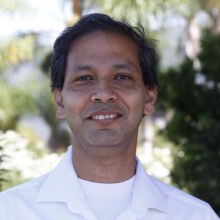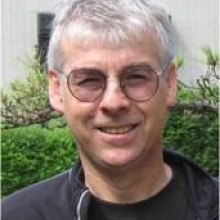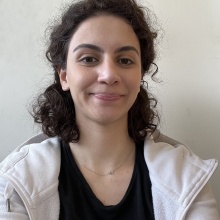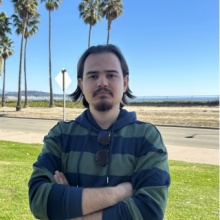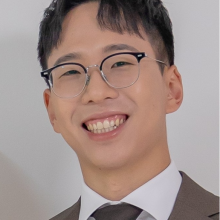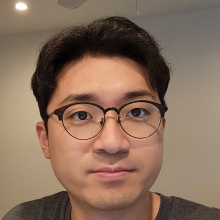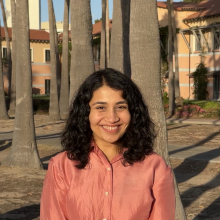About
Millimeter wave (mmWave) communication will play a crucial role in next-generation communication infrastructures, as is already evident from ongoing activity in 5G cellular using the 28 and 37 GHz bands, and in IEEE 802.11ad using the 60 GHz unlicensed band. In this project, we seek to open up the path to commercially viable utilization of spectrum beyond 100 GHz. The goal is to co-design hardware and signal processing architectures for massive extended arrays that sidestep a fundamental bottleneck in packaging: “fitting” the RFIC (radio frequency integrated circuit) electronics becomes difficult at small carrier wavelengths due to the standard constraint of half-wavelength spacing between antennas. The project is a cross-disciplinary collaboration between the research groups of Prof. Upamanyu Madhow (signal processing for wireless) and Prof. Mark Rodwell (ultra high-speed hardware).
This 3-year project (2022-25) is funded by the National Science Foundation under grant CNS-2148303 and is supported in part by funds from OUSD R&E, NIST, and industry partners as specified in the Resilient & Intelligent NextG Systems (RINGS) program.
Technical Approach
We abandon standard sub-wavelength antenna element spacing, greatly easing the implementation and reducing the cost of implementing massive MIMO in mmWave bands. We will develop extremely low-cost 140GHz transceiver modular array tile technologies that readily scale to arrays having vast numbers of elements. The developed modules can be used as generic sub-elements in a variety of extended-array geometries and MIMO systems designs, enabling a wide range of low-cost wireless systems having long range, high capacity, and with both high link margins and spatial redundancy for resiliency. We will develop all-digital hierarchical signal processing architectures matched to the tiled hardware architecture, and will illustrate the systems impact of the robustness and additional spatial degrees of freedom provided by extended arrays in canonical multiuser (MU) MIMO and Line of Sight (LoS) MIMO settings aimed at flexible, cost-effective deployment of access and backhaul nodes. A key concept is spatial redundancy, with hardware and system parameters chosen such that the number of array RF channels greatly exceeds the number of MIMO signals involved. This enables hardware innovations in 140 GHz RFIC design that minimize power consumption and die area, and hence cost, by appropriately sacrificing the dynamic range. Corresponding innovations in signal processing will account for severe constraints on dynamic range for tile level processing, while taking advantage of the larger dynamic ranges feasible for cross-tile processing.
Project Team
Publications
- Canan Cebeci and Upamanyu Madhow, "A Fourier Analysis of Digital Beamforming with Severely Quantized mmWave Arrays", 57th Asilomar Conference on Signals, Systems and Computers, 2023.
- Canan Cebeci*, Oveys Delafrooz* and Upamanyu Madhow, "Scaling mmWave MU-MIMO: Information-Theoretic Guidance using Real-World", 58th Asilomar Conference on Signals, Systems and Computers, 2024.
- Delafrooz Noroozi, Oveys, et al. "Zero-Shot Accurate mmWave Antenna Array Calibration in the Wild" Proceedings of the 30th Annual International Conference on Mobile Computing and Networking (MobiCom/WiNTECH). 2024.
- L. Giridhar, U. Madhow and M. J. W. Rodwell, "Creating Spatial Degrees of Freedom for Long-Range LoS MIMO using Reflect-arrays," 2024 IEEE 25th International Workshop on Signal Processing Advances in Wireless Communications (SPAWC)
Presentations
- "A Fourier Analysis of Digital Beamforming with Severely Quantized mmWave Arrays" poster presented in the 57th Asilomar Conference on Signals, Systems and Computers, October 2023
- Lightning talk at November 2023 Rings PI meeting
- Project poster at November 2023 Rings PI meeting
- Communication-Theoretic Design Insights for NextG Infrastructure: from mmWave Systems to Robust Deep Learning, presentation by Prof. Madhow at ECE Department, UCLA, February 2024.
Code repositories
In preparation
Educational Activities
Material on mmWave MIMO systems will be included in both undergraduate and graduate courses on communications at UCSB taught by PI Madhow, and will be disseminated publicly via this web site. A particular focus will be on severely quantized all-digital mmWave MIMO. Cutting edge RFIC design techniques are taught by PI Rodwell at both the undergraduate and graduate levels, and material related to mmWave RFIC design will be included in these courses.
Graduate students on this and related projects are, and will continue to be, involved in mentoring undergraduate research and capstone projects in communications, sensing, and RFIC design.
Educational Materials:
- Software lab on Digital Beamforming in a mmWave MIMO Uplink (ECE 146B, UCSB Spring 2024)
- Software lab on Modulation, Demodulation and Synchronization in OFDM (ECE 146B, UCSB Spring 2024)
Broader Impact
Our goal is to demonstrate that low-cost extended arrays provide a significant jump in capacity, resilience and flexibility of deployment, which enables seamless and on-demand expansion of data capacity. While we illustrate the systems impact of our approach in specific settings related to outdoor cellular access and backhaul, our modular approach to mmWave hardware and signal processing is broadly applicable, and the low-cost modules built under this project can potentially be reused in a variety of next-generation communication and sensing systems spanning home, enterprise, manufacturing and delivery. The project goals are chosen to de-risk fundamental concepts in hardware/signal processing co-design for extended arrays, and to demonstrate the potential in terms of system capacity and robustness, in order to ease the path to technology transfer.
The project team is engaging in regular calls with industry partners, updating them on technical progress, and incorporating their feedback into the research plan.

